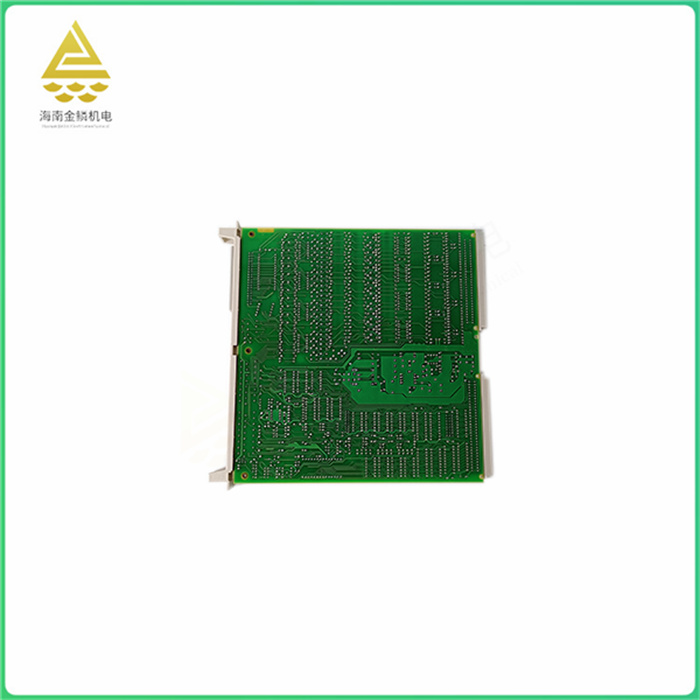An analog input board is a device used to convert a continuous analog signal to a digital signal. It usually consists of one or more analog channels, each of which inputs an analog signal to the board and converts it into a digital signal for processing. Analog input boards are widely used in various fields, such as industrial automation, scientific research experiments, medical equipment and so on.


The main function of an analog input board is to convert analog signals into digital signals so that computers or other digital devices can process them. It usually has the following characteristics:
High precision and high resolution: Analog input boards usually have high precision and high resolution converters that are able to convert analog signals to digital signals and ensure data accuracy and reliability.
Multi-channel: The analog input board can have multiple analog channels and can receive multiple analog signals at the same time and convert them into digital signals.
Configurability: The analog input board can be configured as required, such as setting different parameters such as range, gain and offset, to meet different application requirements.
High-speed data acquisition: Analog input boards usually have high-speed data acquisition functions, which can receive and process analog signals in real time to ensure the real-time and accuracy of data.
Interface compatibility: Analog input boards usually have interfaces compatible with computers or other digital devices, such as USB, Ethernet, etc., for communication and control with computers or other devices.
The function of the analog input board is mainly to convert the external analog signal into the digital signal that the computer can process. These analog signals can be voltage, current, thermocouple, thermal resistance, temperature and other parameters, and the analog input board through the corresponding sensor to collect and convert these parameters into digital signals, and then transmitted to the computer or control system for processing and analysis.
Specifically, the main functions of the analog pad include:
Analog signal acquisition: Analog input board through the sensor to collect analog signals from the outside, such as voltage, current, temperature and other parameters.
Digital signal conversion: The analog input board converts the collected analog signal into a digital signal so that the computer or control system can process it.
Data transmission: The analog input board transmits the converted digital signal to the computer or control system for data processing and analysis.
Configurability: The analog input board can be configured as required, such as setting different parameters such as range, gain and offset, to meet different application requirements.
Interface compatibility: Analog input boards usually have interfaces compatible with computers or other digital devices, such as USB, Ethernet, etc., for communication and control with computers or other devices.
In short, analog input board is a kind of equipment widely used in various fields, it can convert analog signals to digital signals, and has the characteristics of high precision, multi-channel, configurable and high-speed data acquisition.
The advantages of analog input boards include:
Real-time: The analog input board can simulate the working state and signal flow of the circuit in real time on the computer. Through the connection with the circuit board, the analog board can receive and send signals in real time, simulate and test the circuit in real time. This real-time performance enables the analog board to detect and locate the problems in the circuit quickly and accurately.
High accuracy: The simulation and test accuracy of the analog board is usually very high. It can accurately simulate the electrical characteristics of resistors, capacitors, inductors and other components in the circuit, as well as the logic functions of various logic components such as gate circuits, flip-flops, decoders and so on. This high precision makes analog boards an important tool for precisely verifying and debugging circuits in electronic design.
Scalability: Analog boards are usually scalable and can be customized and expanded according to different application needs. Users can add or replace circuit components, test points and other components to meet the simulation and test needs of different circuits. This extensibility makes the analog board highly flexible and adaptable.
Ease of use: Analog boards usually have a user-friendly interface that makes it easy for users to simulate and test circuits. Users can define circuit schematics, set circuit component parameters and test points through graphical interface or code, and conduct simulation and test. This ease of use has made analog boards a widely used tool for electronic designers and developers.
Versatility: The analog board not only has circuit simulation and test functions, but also may have other additional functions, such as signal generators, logic analyzers, spectrum analyzers, etc. These additional functions further expand the use and application range of the analog board.
Economy: The use of analog boards for circuit simulation and testing is relatively economical compared to the cost of actual circuit development and testing. It does not require the purchase of expensive hardware equipment, reducing the time and cost of hardware production and debugging. In addition, the analog board also has reusability and scalability, further reducing development costs.
In short, analog input board has the advantages of real-time, high precision, scalability, ease of use, versatility and economy, so it has been widely used in the field of electronic design and development.
















